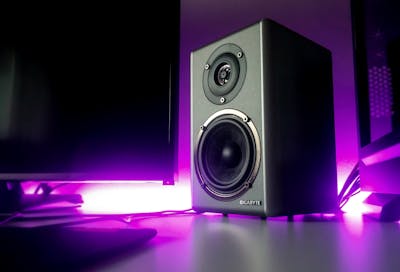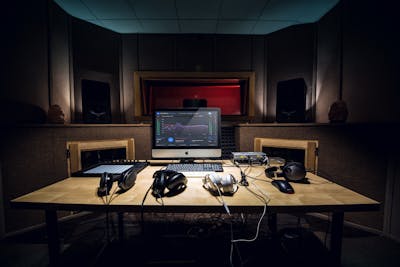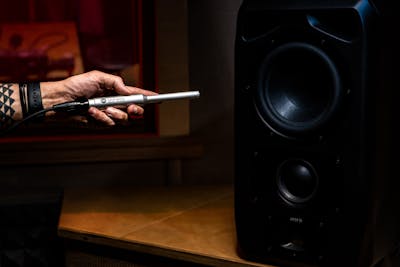When shopping for studio monitor speakers, you probably spend countless hours researching the highest ratings on review sites and pouring through many comments on forums, but you’re probably also aware about what kind of impact the room itself has on your sound system.
We have a thesis that frequency response wise monitors of the present day actually vary in just the slightest ways and the studio or room is the greatest factor in determining what you hear (regardless, excellent studio and monitor speakers are an important part of every studio – that’s why choosing the best options can take some time). Of course the best option is to build the perfect studio room and treat it with the best room treatment materials with the help of the best acoustician around. But not everybody is lucky enough to have the time and resources for that. Or you are travelling and just have to do with whatever room is available. So for those cases where you have to do with less-than-prefect studio and still want to create some great music with confidence, we’ve got the next-best solution to this seemingly complex problem.
Because every theory must be proven, we decided to conduct a little experiment to see how various monitors performed in a standard, unchanging environment. Then we applied the Sonarworks software, a highly precise, groundbreaking calibration technology with multipoint measurement, to see if we could obtain the sort of balance and harmony we were striving for.
On to the experiment…
Our testing location, or our “constant” if we are being completely scientific, was a studio with minimal acoustic treatments – one wall with an angle and an uneven and treated ceiling. (It could be considered a basic bedroom studio much like the ones growing in popularity with the accessibility of digital mixing tools.)
At this location, we set about to measure five different sets of speakers without adjusting the state the room. We left all the instruments, monitor stands, and tabletop components as they were.
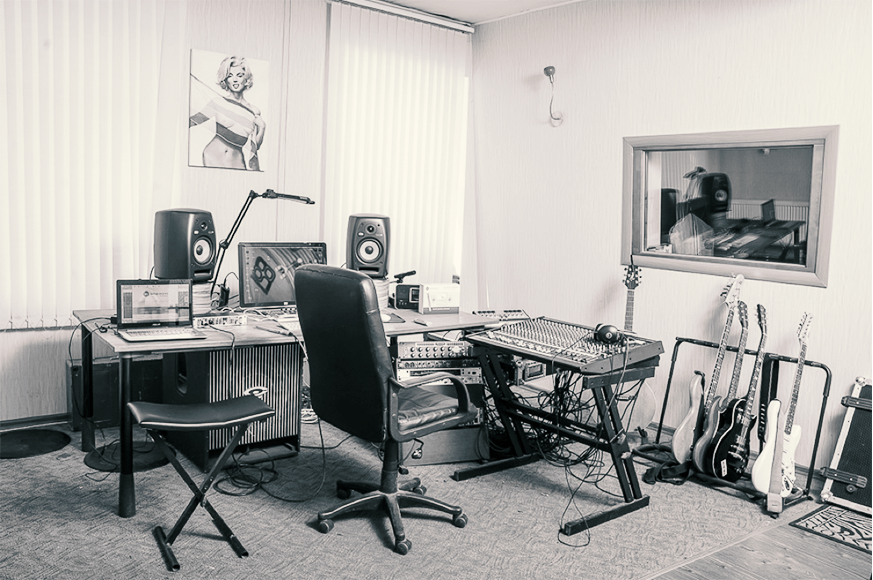

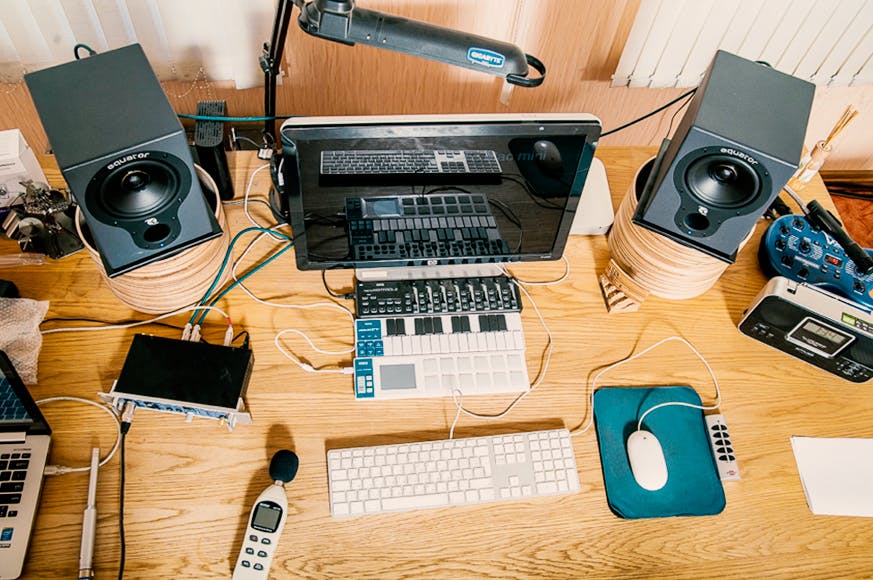
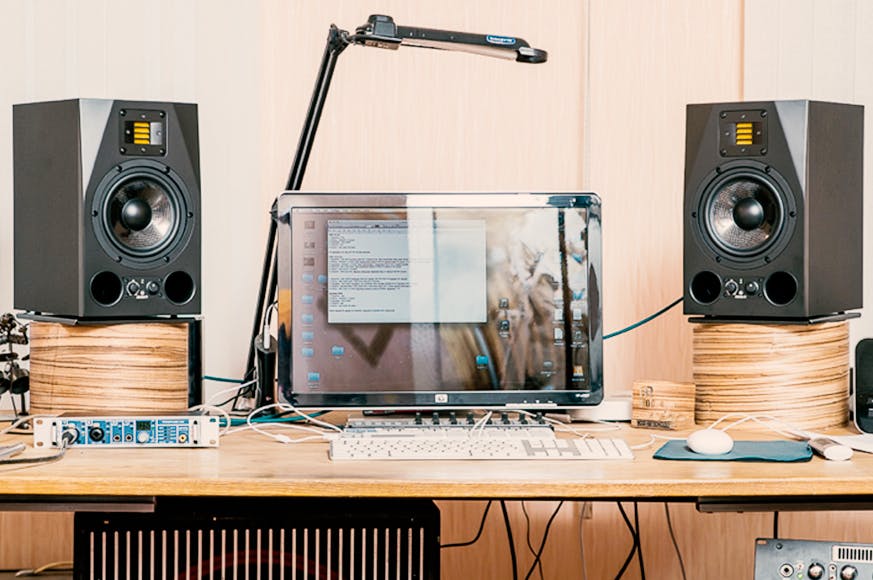
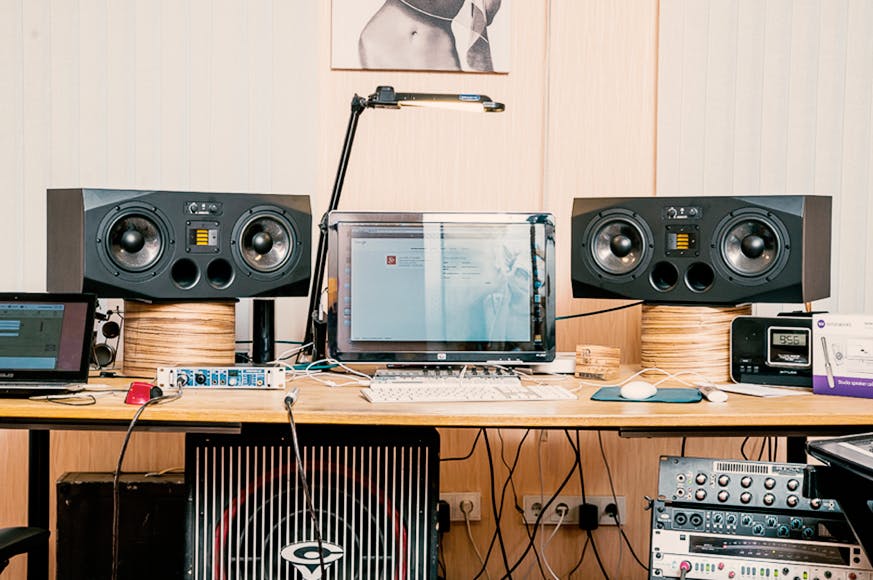
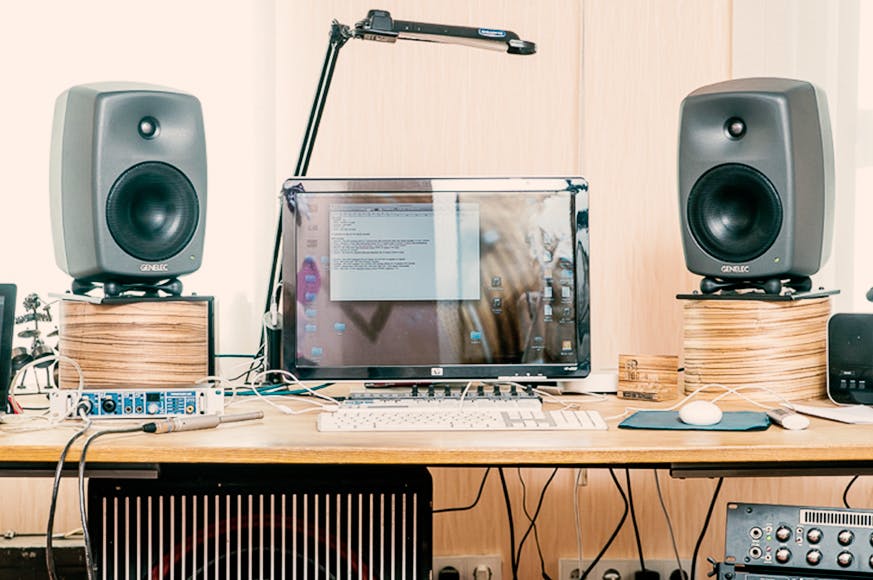
After setting up each monitoring system, we used a 3-step process:
- Measure the frequency response
- Apply the correction (flat response target)
- Re-measure the monitors with correction
For each speaker setup we measured approximately 70 points around the sweetspot. We kept the default priorities for the correction of the room quadrants (sweetspot – high, ~40 cm around it – medium, rest of room – very low). It is important to note that the software automatically detects where you are holding the mic, thus making the measurement process simple for the user and free from accidental mic placement errors.
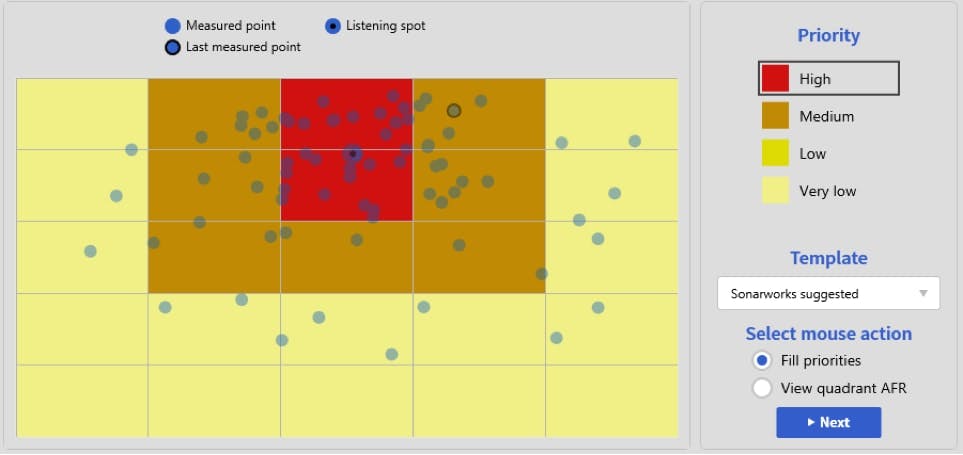
Pre-Sonarworks results
After applying the same measurement techniques to each set of speakers, a pattern emerged to reveal reoccurring issues that the room produced for all sets. As you can see from the graph below, there was a strong overall boost in the low mids ~80 – 200 Hz and dips at 100 Hz, 300 Hz, and just below 1 kHz.
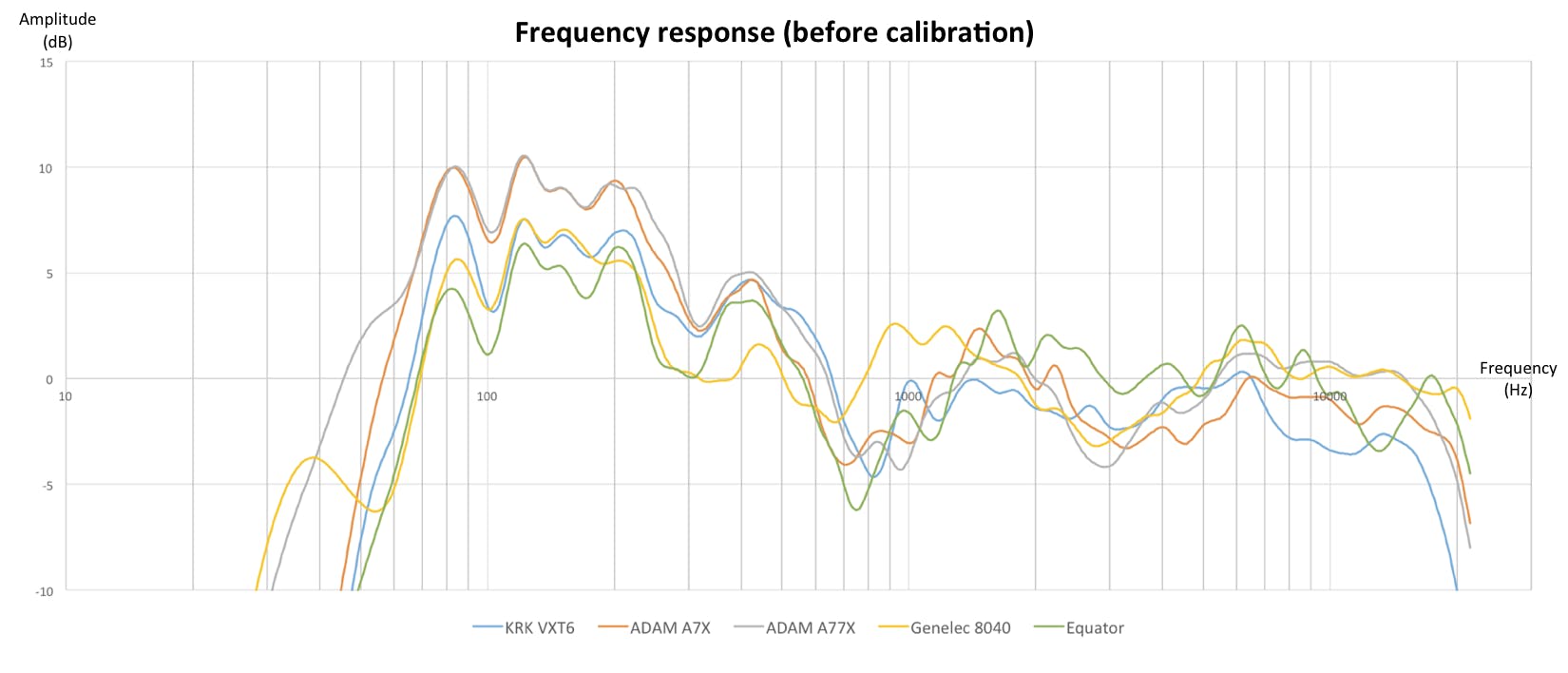
Post-Sonarworks results
We then ran the measuring process again, applying the Sonarworks software to see if we could correct the room issues. The correction plugin was included in the audio chain (using Virtual Audio Cable and Reaper).
We were quite pleased with the outcome of this test. As you can see from the graphic below, we witnessed considerable improvement. After the calibration, the main difference between these sets of monitors was at the roll off point of the bass frequencies while the overall frequency response was quite uniform.
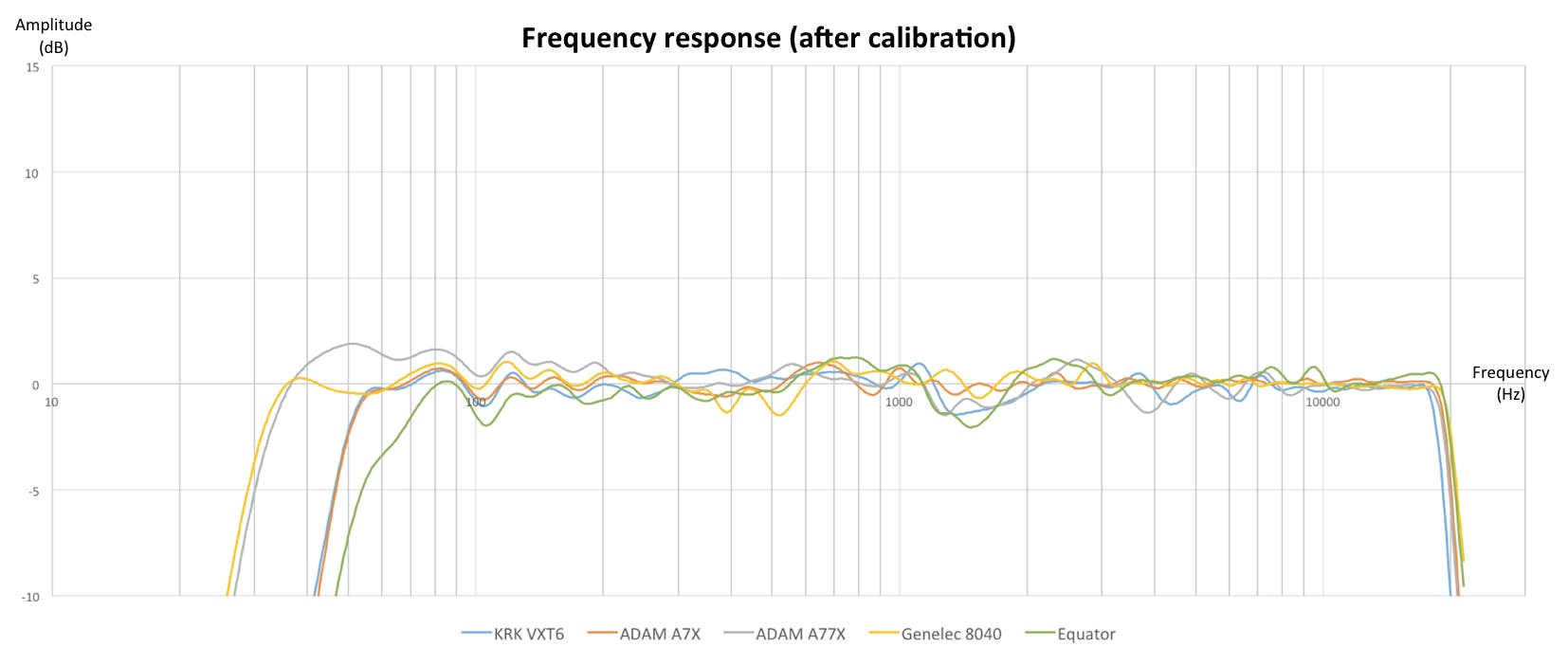
The evidence from our experiment confirmed our thesis that frequency response wise room characteristics determine the sound in the studio more than specific model of monitor speakers. While the characteristics of the room generally affected all of the speakers equally, we were glad to see that the issues were easily remedied with the Sonarworks technology.

